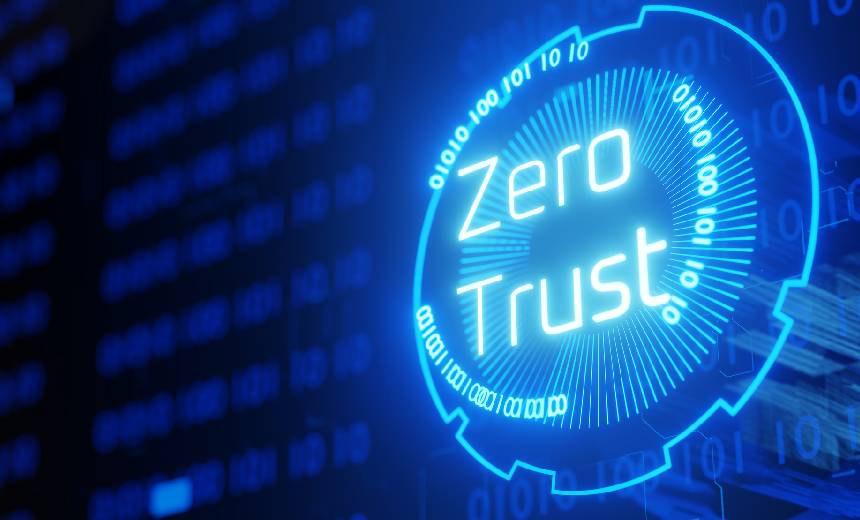Implementing Zero Trust

Zero trust is an adaptable security framework designed to address today’s cyber security challenges. It employs microsegmentation and data-centric policies, verifying users, devices, applications irrespective of network location as well as supporting compliance in multi-cloud or hybrid environments while simplifying compliance processes.
Zero trust operates under the motto, “never trust, always verify“. This approach abandons any notion that an enterprise has an infallible defensive perimeter and assumes anything outside it can only be trusted as untrustworthy.
What is Zero Trust?
Zero Trust (also referred to as trust) is a security model and architecture that restricts default access to an organization’s digital infrastructure, devices, applications and services until they have been fully verified and authenticated. First proposed by John Kindervag at Forrester Research in 2010, zero trust provides an alternative approach to traditional IT security models which focus on protecting only perimeter assets while presuming everything inside can be trusted.
Zero Trust requires teams to adopt new practices and technologies, although its framework can be built atop existing security tools and processes. When choosing your solution it should align with your organization’s business operations, risks, and desired security outcomes.
Zero trust solutions that enable least privilege access can help teams minimize the scope of damage if there is a security breach, while providing protection from threats by providing granular access based on identity and contextual data. In addition, these solutions can monitor for pattern anomalies or signs of malicious activity such as API attacks.
Who are the Best zero-trust Vendors?
Zero trust vendors provide various solutions that can be used to implement zero trust security policies, including identity and access management (IAM), VPNs, firewalls and advanced threat detection and response features. All their offerings meet NIST 800-207’s standard for Zero Trust which ensures compatibility against modern attacks while providing complete protection.
Zero Trust vendors should prioritize user experience while upholding security. Their solutions should use advanced authentication methods and risk-based rules to enable quick user access to resources quickly, while supporting cloud-first work from anywhere models most organizations strive for.
An effective Zero Trust vendor should have an established track record and be willing to work closely with you in order to ensure a successful deployment. They should also be able to answer questions about costs and pricing upfront and demonstrate their capabilities through free trials or proof-of-concept.
How to Implement Zero Trust?
Implementing Zero Trust requires multiple steps. To ensure its success, begin by conducting an exhaustive inventory of users, devices, and digital assets that require access to your network. This will help determine what needs protecting and formulate policies based on least privilege.
Prioritize your security goals and build a firm base for Zero Trust deployment, such as by securing privileged accounts, restricting connection privileges and applying encryption at rest and transit – this will help prevent breaches while mitigating their impact.
Protecting your infrastructure using micro-segmentation tools and identity-aware proxies is also key, to protect against unapproved access and the risk of malware attacks. Furthermore, consider multi-factor authentication (MFA), which requires multiple pieces of evidence before authenticating a user.
What is Zero Trust Framework?
Zero trust security frameworks remove inherent trust between users and devices by requiring authentication and authorization prior to accessing resources on the network. They utilize technologies like identity protection, risk-based adaptive policies, continuous verification of users, endpoints, and data, microsegmentation enabling IT teams to isolate systems and networks from threats that might spread from within, microsegmentation providing additional isolation of threats that could spread inside, microsegmentation allowing IT teams to protect systems against threats that threaten from the inside, microsegmentation allows IT professionals to isolate systems from threats that might spread from within systems and networks as well as isolate and protect systems/networks from within threats that might spread from within;
This strategy can be an effective solution to modern cybersecurity challenges, including those related to protecting remote workers and hybrid cloud environments. But for it to work effectively, committing to changing workflows and adding security processes may require considerable sacrifice in productivity terms.
Zero trust security solutions provide more agile protection against new threats than traditional approaches, which often take too long to react. Zero trust leverages least-privileged access controls for user and device access as well as continuous monitoring and multifactor authentication (MFA) to verify identities and prevent unwarranted entry.
What are the Benefits of Zero Trust?
Zero Trust security model provides companies with an effective means of protecting data against cyberattacks. Through enforcement of least-privileged access controls, continuous monitoring, multifactor authentication (MFA), and behavioral analytics; Zero Trust can prevent attackers from infiltrating networks more easily – protecting against threats targeting insiders, remote workers and mobile devices alike.
Security teams can quickly verify access based on risk and compliance requirements with its centrally visible visibility into network and cloud activity reducing manual management costs and saving your business money.
Zero Trust can have its advantages; however, its costs shouldn’t be ignored either. Implementation requires IT and security teams to adjust their mentality when approaching security matters, as well as finding reliable partners for implementation and management. Furthermore, its implementation adds friction to workflows by adding authentication steps which could hinder productivity.
How to Implement Zero Trust Security?
Zero Trust security requires taking an integrated approach that addresses user, endpoint and network security. Solutions based on Zero Trust can utilize business policies to safeguard users across public cloud environments, hybrid networks or on-premise network architectures.
Zero trust solutions must be capable of verifying the identities of users, devices and workflows through multifactor authentication and device health checks, in addition to providing granular authorization and just-in-time access. They should also monitor compliance with security protocols and policies.
Zero Trust solutions should also monitor system performance and identify any pattern anomalies to help organizations optimize performance without compromising security. Finally, Zero Trust should address insider threats by restricting lateral movement and guaranteeing access to only legitimate systems.